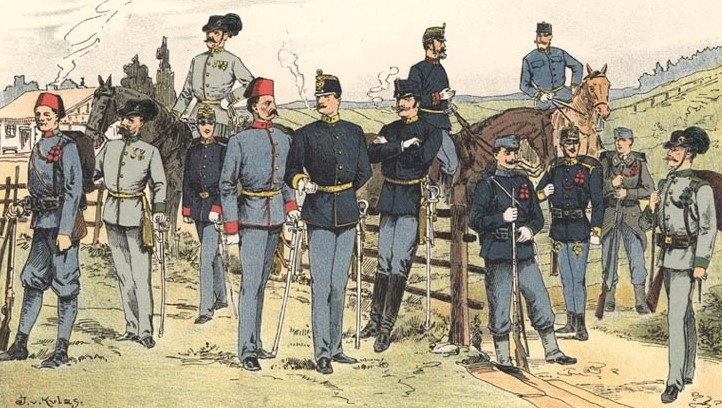Austro-Hungarian Empire
Austria-Hungary, also known as the Austro-Hungarian Empire or Austro-Hungarian Monarchy, proper name Dual Monarchy - from the Constitutional Compromise of 1867 between Austria and Hungary until the empire's fall in 1918. Central Power, the Coalition during World War I consisted mainly of the German Empire and Austria-Hungary, the "central" states of Europe that had been at war since August 1914 against France and Great Britain on the Western Front and against Russia on the Eastern Front Germany, Austria-Hungary and Italy were parties to a secret agreement, the Triple Alliance, from 1882 until World War I, but Italy joined the war against Germany and Austria-Hungary. The Ottoman Empire entered the war on the side of the Central Powers on October 29, 1914, as did Bulgaria on October 14, 1915.
At the turn of the century, the Austro-Hungarian Empire was the largest political entity in continental Europe. It occupies most of central Europe with an area of nearly 700,000 square kilometers. There were 11 major ethnolinguistic groups in the empire: Germans, Hungarians, Poles, Czechs, Ukrainians, Slovaks, Slovenes, Croats, Serbs, Italians, and Romanians. After World War I, the Austro-Hungarian Empire was split into separate parts and lost nearly 75% of its former land, which was then divided among Romania, Czechoslovakia, Yugoslavia, Poland, and Italy. Austria and Hungary were deliberately left out economically and militarily to prevent them from becoming a threat in the future. This is one of the most powerful colonial empires of the 20th century.
- Major Events: World War I, Treaty of Versailles, Battle of Caporetto, Battles of the Isonzo, Bosnian crisis of 1908
- Key People: Johannes Brahms, Franz Joseph, Franz Kafka, Edward Teller, Tomas Masaryk












